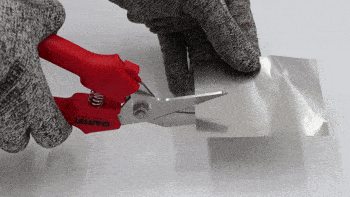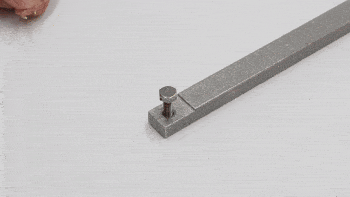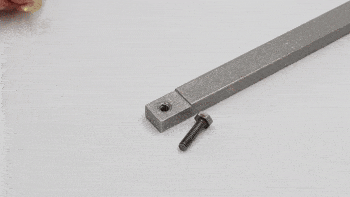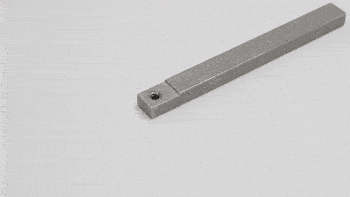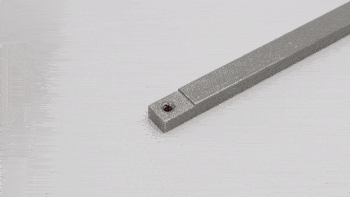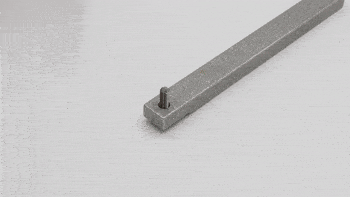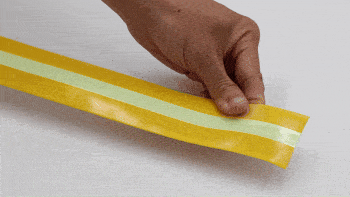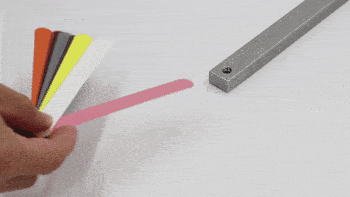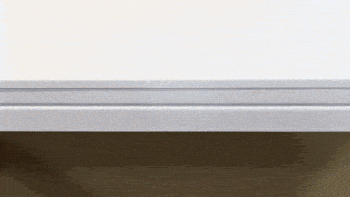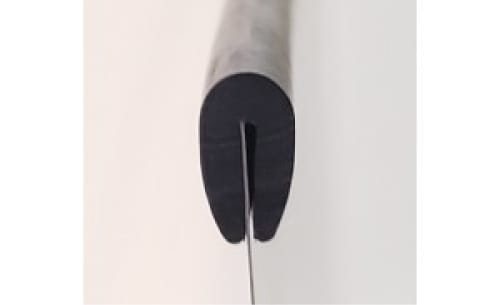For this first test, we used TRE08 series, which is best used for 0.8mm plates. However, we tested it on 0.4mm, 0.5mm, 0.6mm, 0.8mm, 1mm and 1.2mm stainless steel plates to see how far it could accommodate. You may see the summarized reports of their cross-section and side profiles below.
It must be mentioned that the lips of the trims are naturally closed, and will need some stretching in order to fit onto the plate edges. That being said, TRE08 has a grip on every plate that we tested it on, especially for the thinner ones. This is mostly due to the strong frictional force given by the rubber.
0.2mm Plate
 | Cross-section view: Like putting a wig on a door, it would be an understatement to say that TRE08 does not fit a 0.2mm plate. There is no grip at all. |
 | Side: The rubber edge trim does not grip the plate and can slide off easily. |
Conclusion: Definitely not usable. It would be better exploring other methods of edge protection.
0.4mm Plate
 | Cross-section view: Noticeable big empty spaces. |
 | Side: It is easy to move the rubber edge trim across the edge. There is some grip on the plate, but not strong for sure. |
Conclusion: Usable if you are using it on stationary parts, where a lack of vibration will not cause the trim to move.
0.5mm Plate
 | Cross-section view: Noticeable empty spaces |
 | Side: Better fit than the 0.4mm plate and better grip on the plate. The rubber edge trim can slide along the plate with some effort. |
Conclusion: Usable
0.6mm Plate
 | Cross-section view: Noticeable small empty spaces |
 | Side: Good grip onto the plate. Not easy to slide along the edge. |
Conclusion: Usable
0.7mm Plate
 | Cross-section view: Close to a perfect fit, with close to zero empty spaces. |
 | Side: Good grip. Not worth sliding along the edge without protective gloves. |
Conclusion: Usable
0.8mm Plate
 | Cross-section view: Zero empty spaces. |
 | Side: Snug fit. Hard to slide along the plate. Huge force is required in order to do so. |
Conclusion: Definitely Usable. Kind of awkward if it wasn’t.
1mm Plate
 | Cross-section view: The lips are flaring out from the top. Noticeable empty spaces at the edge entrance. |
 | Side: Able to fit. Difficult to pull along the plate. |
Conclusion: Usable. The lips are still able to grip onto the plate, providing enough surface contact for protection.
1.2mm Plate
 | Cross-section view: Lips are flaring out from the entrance. Noticeable empty spaces on the sides. |
 | Side: It is a firm grip, but the rubber edge trim can be pulled off with little effort. |
Conclusion: Usable but caution must be taken for long term usage.
We didn’t see the point in testing anything thicker than 1.2mm as the limit has been reached. The lips would flare noticeably, indicating a lack of grip. It would not be worthwhile testing it further.
In conclusion, a TRE08 rubber edge trim can be used for plates that are thinner than the recommended 0.8mm (from 0.4mm onwards up to 1.2mm), which is the absolute limit. Cue the standard disclaimers, as we take no responsibility for anything that goes down for not using the recommended trim on a suitable plate.
